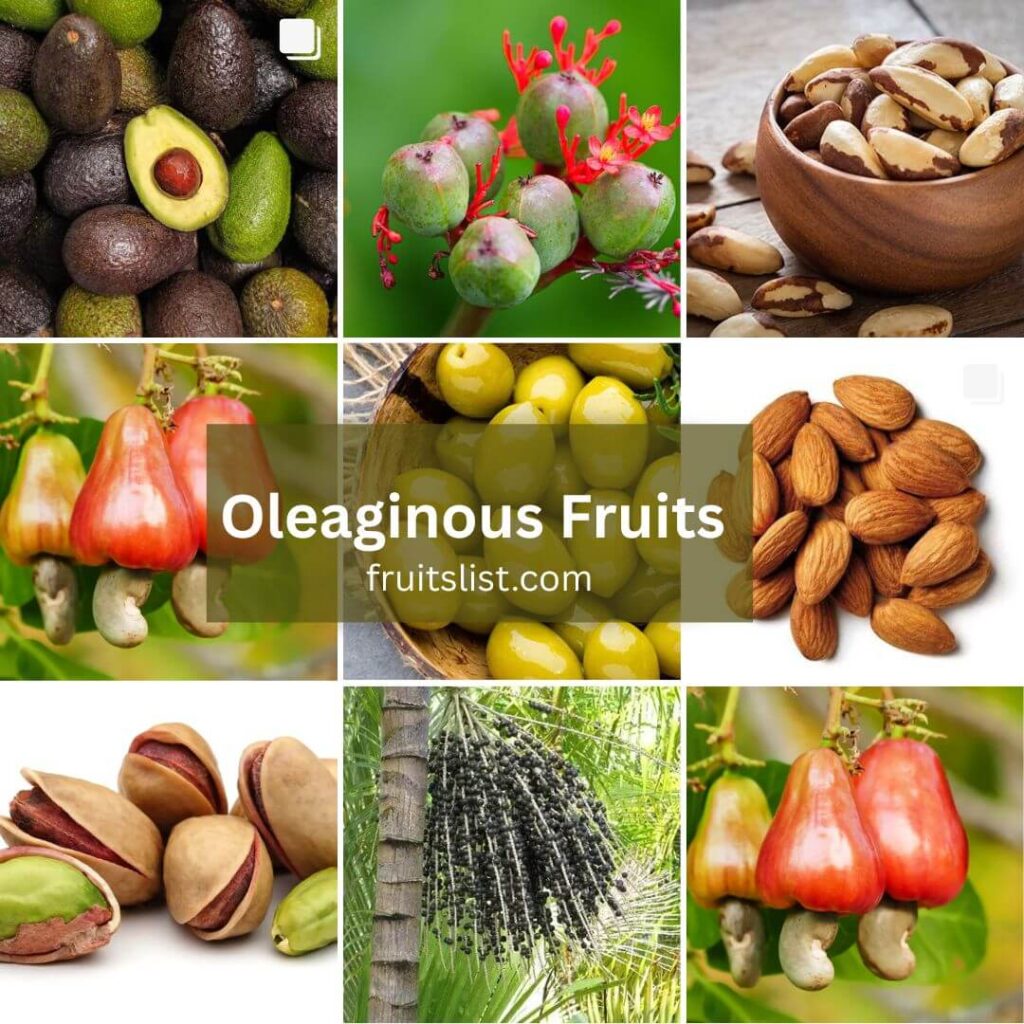
How many oil fruits can you name off the top of your head? I’ll bet the first ones that came to mind were coconut, olive, avocado, almond, or cashew nut. But the truth is, there are far more oleaginous fruits out there than most of us realize.
By the way, the correct term for oil-rich fruits is “oleaginous fruits.” The word oleaginous simply means that a fruit is rich in oil or contains a significant amount of fat, making it useful for cooking, cosmetics, or industrial purposes.
Below, you’ll find a list of oleaginous fruits in alphabetical order, giving you a chance to discover some familiar favorites and perhaps a few surprises you didn’t know about.
List of Oleaginous/ Oil Fruits
- Acai
- Almond
- Alma
- Amur cork tree
- Apple seed
- Apricot Kernel
- Arctic cranberry
- Artichoke fruit
- Avocado
- Bacuri
- Beechnut
- Bergamot
- Bitter Guard
- Blackberry
- Blackcurrant
- Blueberry
- Bottle guard
- Brazil Nut
- Buffalo guard
- Butternut squash
- Cashew oil
- Castor Bean
- Castor beans
- Chokeberry
- Cloudberry
- Coconut
- Coffee berry
- Cucumber
- Cupuaçu butter
- Custard apple
- Elderberry
- Fig
- Goji berry
- Grapeseed
- Guava
- Hazelnut
- Jamaican cobnut
- Jatropha
- Jojoba
- Juniper berry
- Kiwi
- Lemon
- Lime
- Lingonberry
- Macadamia Nut
- Mandarin
- Mango
- Mango Kernel
- Mangosteen
- Marula
- Mongongo
- Mowrah Butter
- Neem
- Nutmeg
- Olive
- Orange
- Palm Fruit
- Papaya
- Passion fruit oil
- Peach Kernel
- Pecan
- Pequi
- Permanganate
- Permission
- Petroleum nut
- Pine nut
- Pistachio
- Plum kernel
- Pomegranate Seed
- Prickly Pear Seed
- Pumpkin
- Quince
- Raspberry
- Rose hip
- Sacha Inchi
- Sapote
- Sea buckthorn
- Shea Fruit
- Sousop
- Taramira
- Tigernut
- Tomato
- Walnut
- Watermelon
Applications of Oleaginous Fruits
The oils extracted from these fruits have culinary, cosmetic, and industrial applications, making them valuable around the world.
1. Culinary Uses
Many oleaginous fruits provide edible oils that are staples in cooking. Olive oil, coconut oil, and avocado oil are common examples used for frying, sautéing, baking, or simply as a salad dressing. Some oils, like almond or apricot kernel oil, are also used to add delicate flavors to dishes.
2. Cosmetic and Skincare Uses
The rich oils from fruits such as shea, mango, and macadamia are popular in skincare and haircare products. They moisturize, protect, and nourish skin, often appearing in lotions, creams, soaps, and hair oils.
3. Medicinal and Traditional Uses
In some cultures, oleaginous fruit oils have been used in traditional medicine. For example, coconut and shea butter are applied to burns and dry skin, while other oils are used in folk remedies for inflammation or digestive issues.
4. Industrial Uses
Certain fruit oils are also used in industrial applications, such as biofuels, lubricants, and even in the production of soaps and candles. Their high oil content makes them versatile beyond just food or cosmetics.
